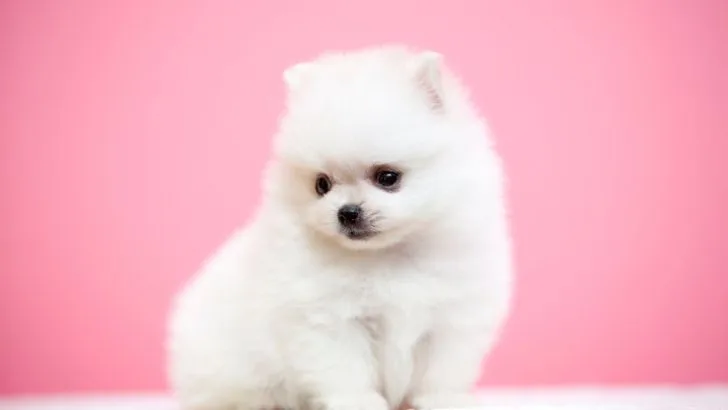Did you know that there are 25 different colors of Pomeranians? Today, I will present detailed information regarding the fascinating and diverse Pomeranian color chart.
We will discuss the array of colors recognized by the American Kennel Club (AKC) and coat colors that the AKC does not allow in Pomeranian dogs.
This small dog breed is named ‘Pomeranian’ from the region of Pomerania where they originated, now part of western Germany and Poland.
They are well known for their compact size, soft and fluffy double coat, alert expression, and genuinely spirited nature.
This breed is a Spitz type with endless energy and high intelligence. The Pomeranian often displays confident and curious behavior, quickly making them a popular companion dog.
The luxurious coat on the small body of the Pom needs regular grooming and attention to maintain. This adorable dog breed comes in various colors and color patterns.
Their attentive expression, bright eyes, and perky ears give them an endearing and curious appearance. But be aware, just as with other breeds, early socialization of Pomeranian puppies is essential for a well-functioning adult dog.
The Pomeranians have royal roots! During her vacation in the late 1800s, Queen Victoria fell in love with this dog breed and brought some back home with her. Soon after, she started breeding her dogs and presenting them at Best in Shows.
The Queen won many competitions thanks to the Pom’s agility and excellent presentability. The fact that she was Queen must have helped a little too.
Now, let’s dive into the intriguing world of the Pomeranian breed standard and the complete list of different Pomeranian colors.
Pomeranian Coat Colors
As mentioned, the Pomeranian dog can come in an array of colors and patterns.
These pups can be solid-colored, for example, black, red, or the well-known color of Poms – orange. However, they also have less known hues and colors, such as beaver and lavender.
Some Poms are born with two or three diverse colorings on the same body!
The most popular and common colored Pomeranians are the orange and orange sables. The Pomeranians we know today started with a minimal color palette, usually cream, white, black, or occasionally particolored.
Before we start, to clarify one thing mentioned throughout the article, the term “Points” refers to the Pomeranian’s rims of the eyes, lips, nose, and pads of their feet.
1. The Black Pomeranian
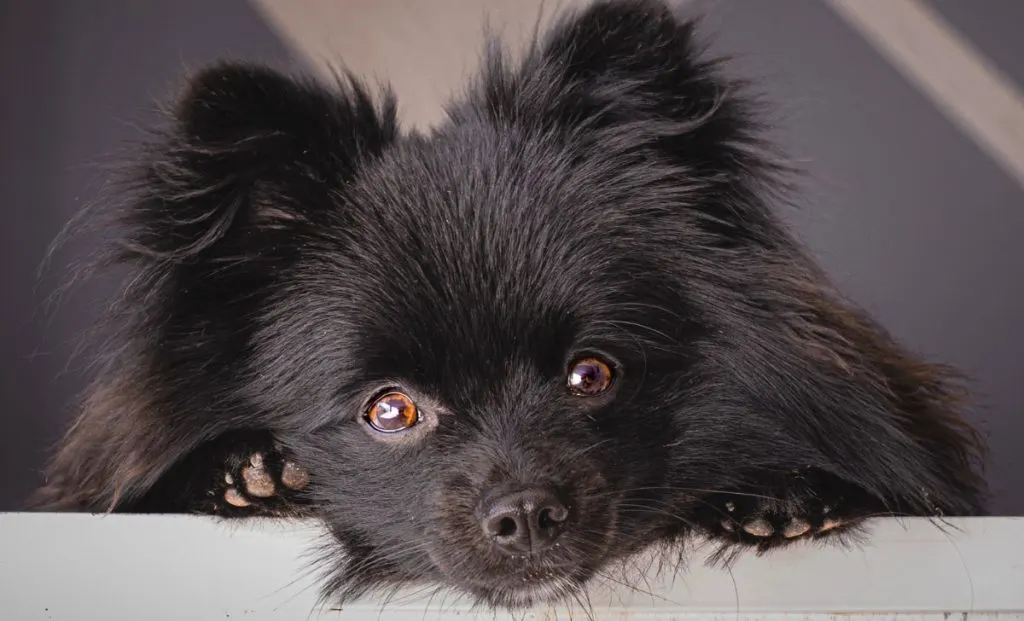
Black Pomeranian dogs have a black undercoat with black guard hair. Points in this color must be black.
Black Pomeranians must be kept out of direct sunlight to avoid a reddish hint developing on their coat.
Black Pomeranians often have a few white hairs on their coat. Typically, the white is found on the dog’s chest or between the pads.
2. The Beaver Pomeranian
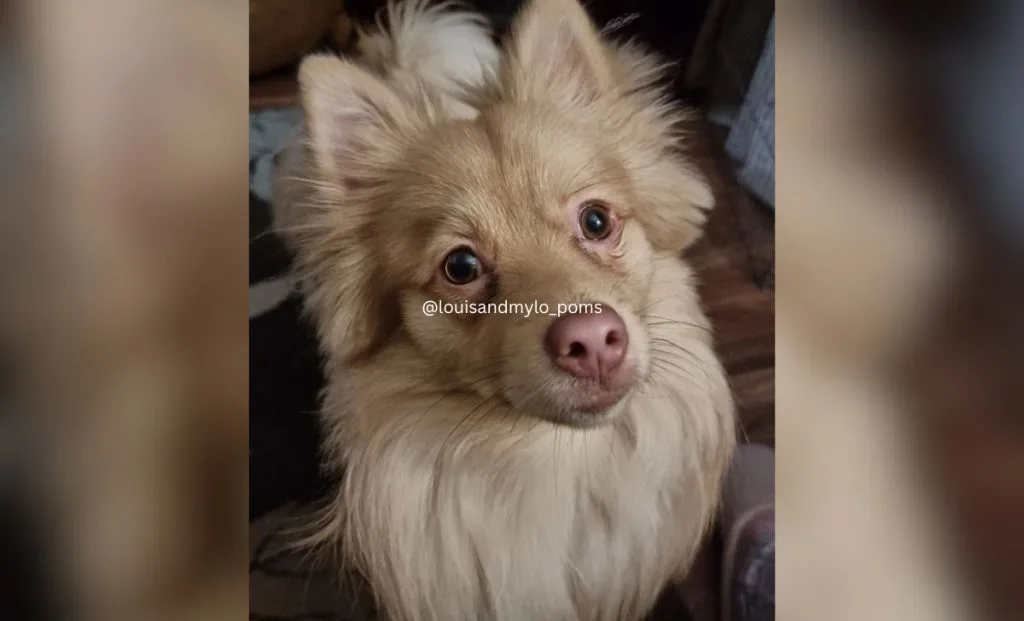
A Beaver Pomeranian is a dilute brown. The beaver coat ranges in color from orange-brown to beige cream.
A beaver-colored Pom has a taupe color, usually with a silvery blue touch on the coat tips.
In older versions of the Breed Standard across the major kennel clubs, this color was called “biscuit.”
One stand-out feature of this coat color is the pigment on the points, which has to be self-colored ( i.e., brown).
Poms with a beaver color have hazel eyes. If you notice black points, dark eyes, or black in the dog’s coat, he’s not a beaver or brown Pomeranian.
3. The Chocolate Pomeranian Or The Brown Pomeranian
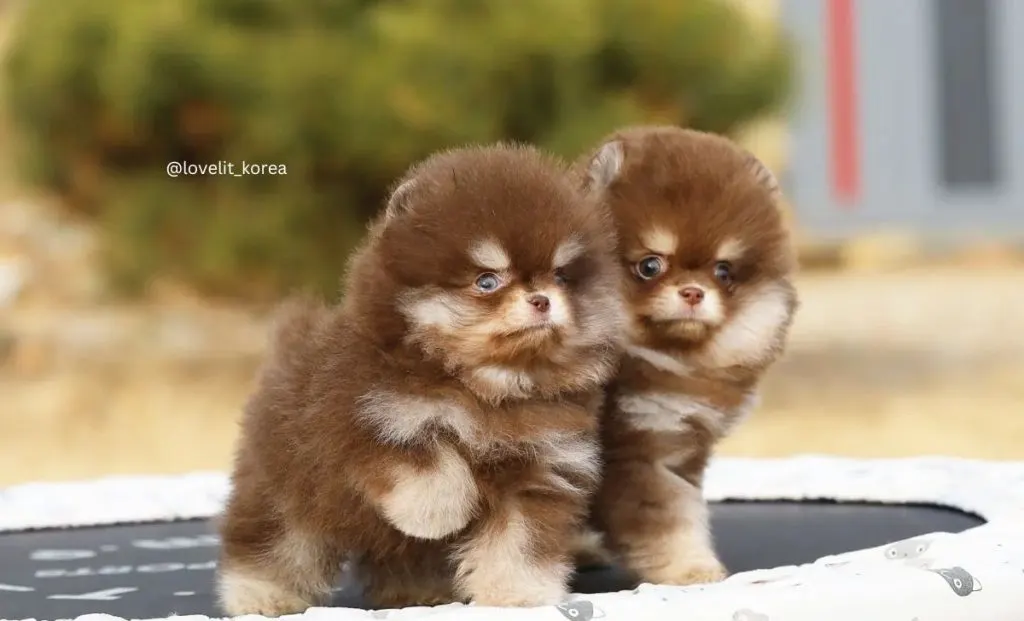
When talking about the brown color in this breed, it had a wide range from light beaver to the darkest chocolate shade.
Chocolate in Pomeranians is rich and self-colored. At the same time, brown is more of a milk chocolate hue and may occasionally have lighter shades.
“Sunburning” or a reddening of the coat color can occur if the Pom spends a lot of time outside.
Every Pomeranian that is considered brown has to have brown points, and just like the beaver Poms, brown ones often have hazel eyes.
4. The Blue Pomeranian
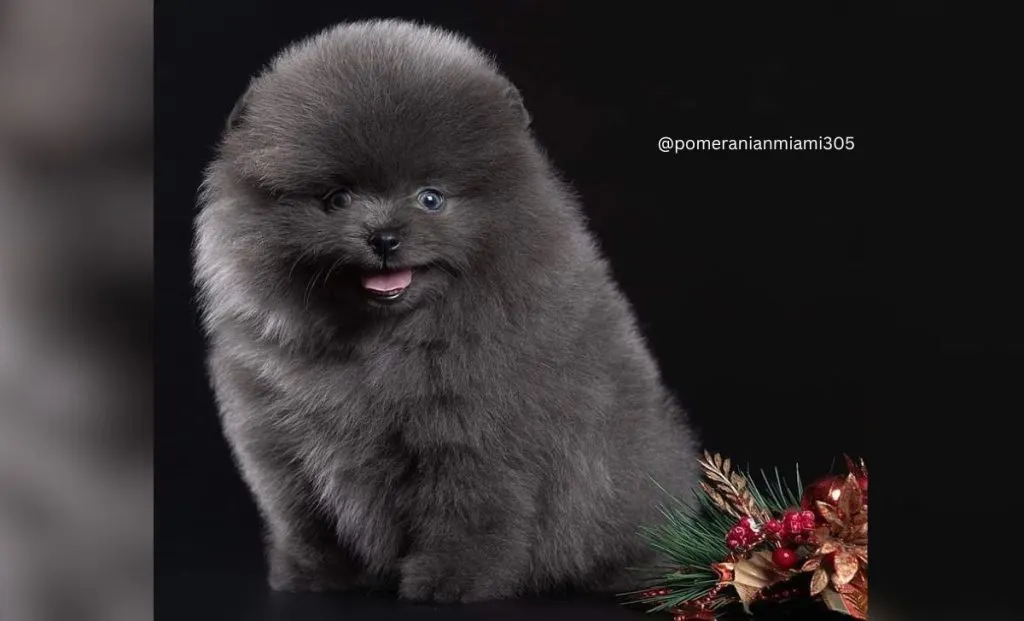
Blue Pomeranian is a solid color. A blue Pomeranian dog has to have light to dark grey guard hairs and a greyish undercoat with blue hair or fur.
Some blue poems are so dark blue that they might look black in some light. At birth, blue Pomeranian puppy colors are usually silver. Some newborn blue puppies will even appear to be black.
Blue Pomeranian puppies grow a silver or grey undercoat and a dark slate grey outer coat as they age. Pomeranian blue is simply a diluted black and the dog must have blue points.
Blue Poms are often a result of breeding black Poms together.
The dog is suitably called a parti-color tri-color Pomeranian if the coat has more colors.
5. The Cream Pomeranian
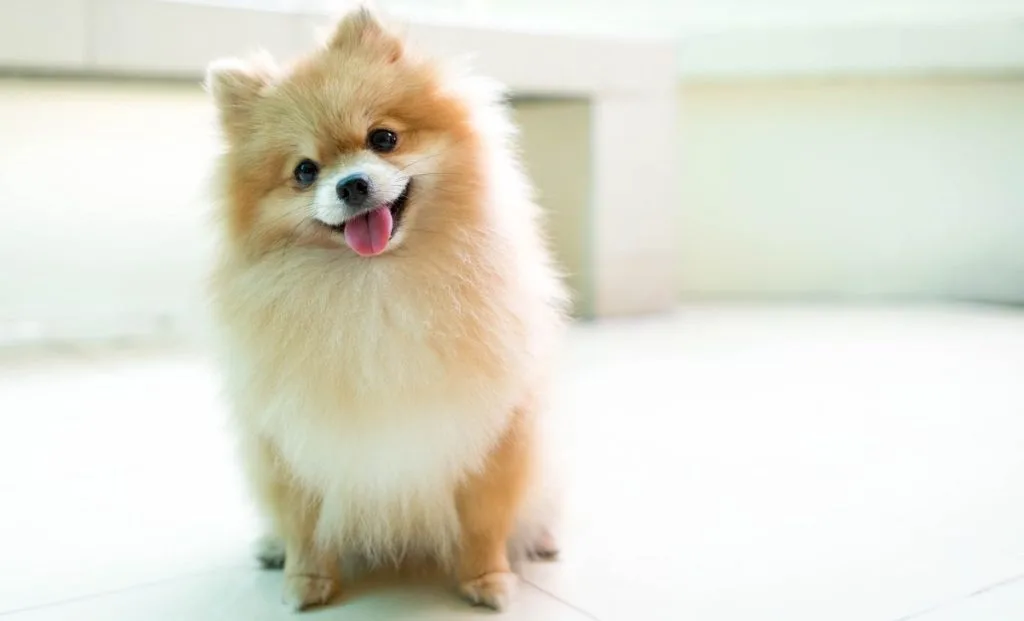
Cream Pomeranians should be self-colored, with no white breechings. They have a bit of a harsher texture of their guard hairs, so their topcoat appears darker.
A cream Pomeranian must have black eye rims, a nose, lips, and pads. The whiskers on the dog are usually white or straw color.
A cream-colored Pom pup is white at birth. When clear cream pups are born, they seem as close to white as possible and without the capacity to have any black pigmentation on their hair.
Also, if you look closer at their whiskers, you will notice they are clear or have a straw color.
6. The White Pomeranian
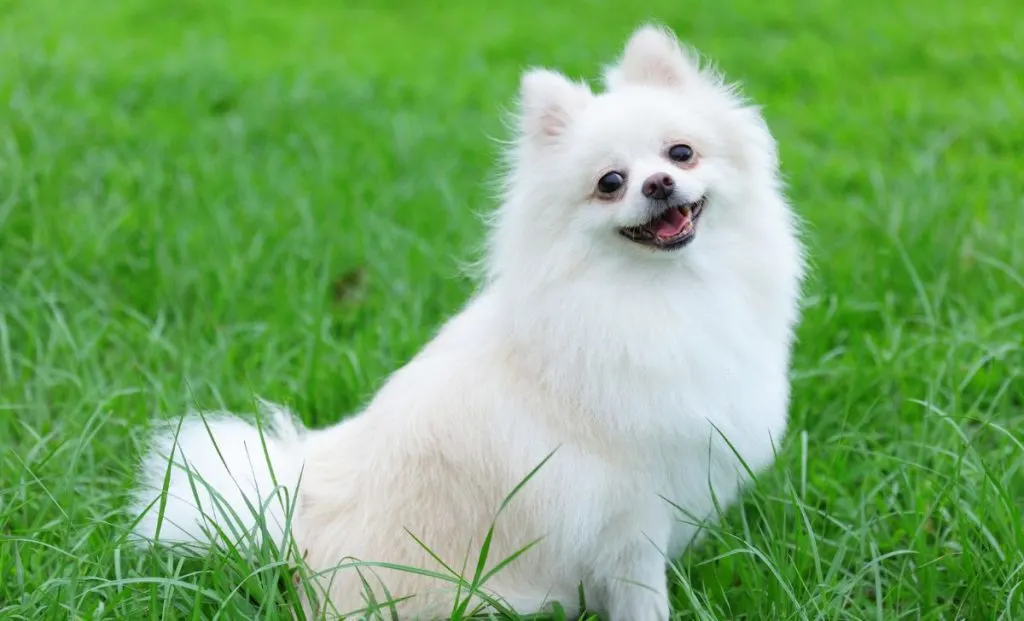
As a newborn pup, a white Pomeranian is snow white in a hue with pink points.
As time passes and the puppy ages, the points should darken to black.
An all-white adult Pom should be white, without any lemon or cream shadings.
7. The Lavender Pomeranian
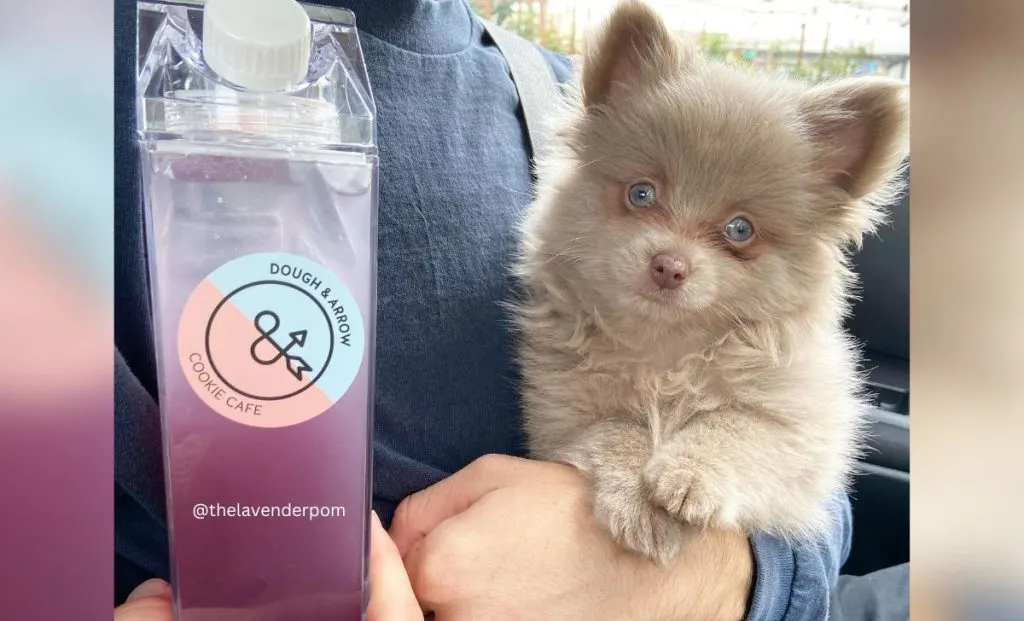
This scarce coat color is a diluted chocolate. It can happen when both blue and brown are combined on one dog.
It has a look that matches the Weimaraner breed because it possesses a similar mixture of genes.
Depending on the breed, it’s silvery-brown, usually known as Isabella or Lavender. The pigment is self-colored.
The lavender color in this breed is gray, with a pinkish chocolate hue on the dog’s coat. This is regarded as a rare Pomeranian color.
You’ll get this incredible color if you think about how a grey Pom looks and add a slight tinge of light purple.
Lavender-colored Poms result from breeding two dilute Poms, like a blue and a beaver, together. The American Kennel Club (AKC) Pomeranian breed standard does not approve of this beautiful color.
8. The Orange Pomeranian
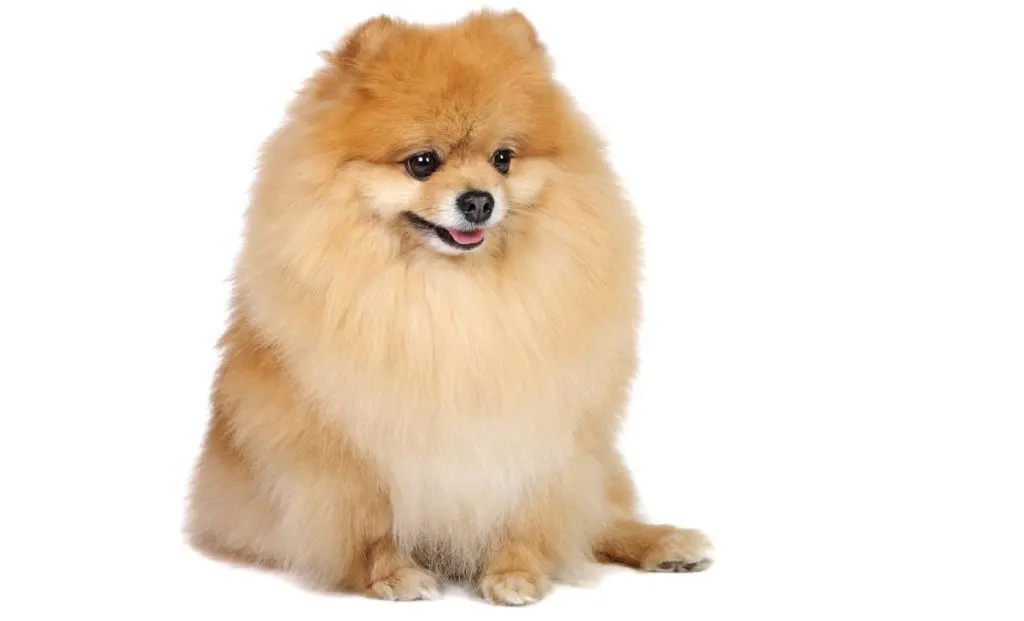
There are more types of orange Pom. Orange Pomeranian dogs can appear white as newborns or even a sable color or a light orange.
An Orange Pom pup can be born a darkish sable. This dog will often be a lovely orange-colored dog at maturity.
The breed standard says that an Orange Pomeranian must have black points.
An adult orange dog (that is the phenotype) can have two different genetic types (genotypes). The colors of new Pom puppies will show the genetic difference.
When an orange pup is born, it usually sports sable fur and the coat color slowly lightens and becomes orange as time passes. These types of Pom puppies often turn out a bright orange color.
If the sable shading does not fade, as an adult, this dog will be a sable orange Pomeranian.
Sometimes, the pup is born with no black hair and a clear, bright color. The cause is the pup having the homozygous gene for the orange color.
Homozygous orange dogs can range from dark red to the palest creamy orange.
The points of the lighter-colored orange Poms might not be as dark as the Poms that have the sable gene.
9. The Red Pomeranian
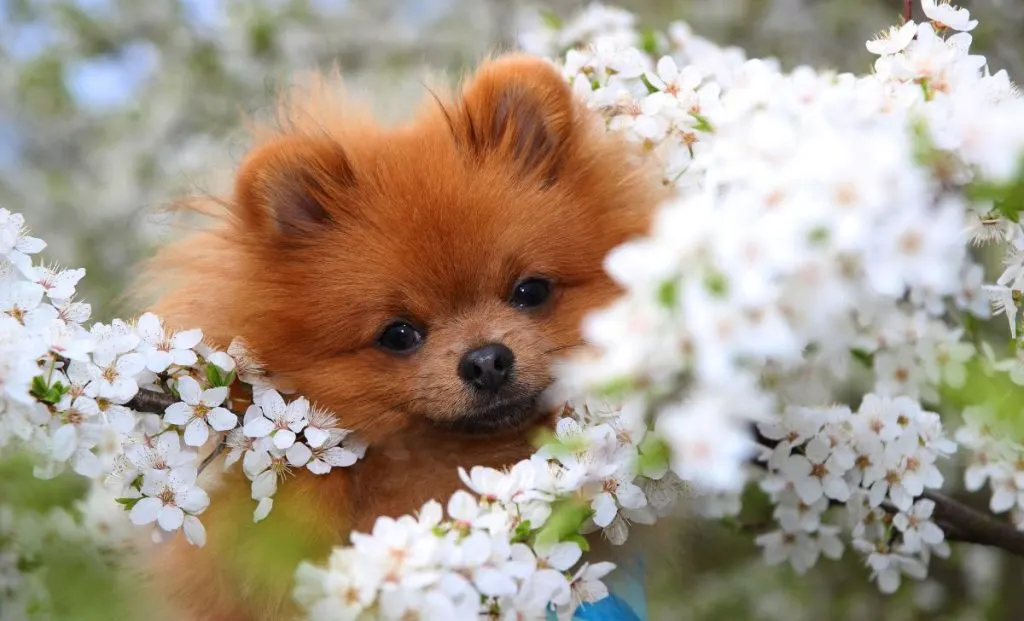
A red Pomeranian dog has a deep rusty red color on the coat, and his points must be black.
The Sable Pomeranian
A Pomeranian dog with a sable pattern must have at least three colors shaded light to dark in the coat. This shading must be as constant as possible, with no regions of self-color.
“Sable” is a term that refers to the darkened bands on a pom’s harsh, long guard hairs. It may be extremely dark, heavy, sparse, or somewhere between.
The nature of the pattern and shade is yet another variable: whether any other recessive genes are present, as they might change the strength of the black pigment.
10. The Chocolate Sable Pomeranian
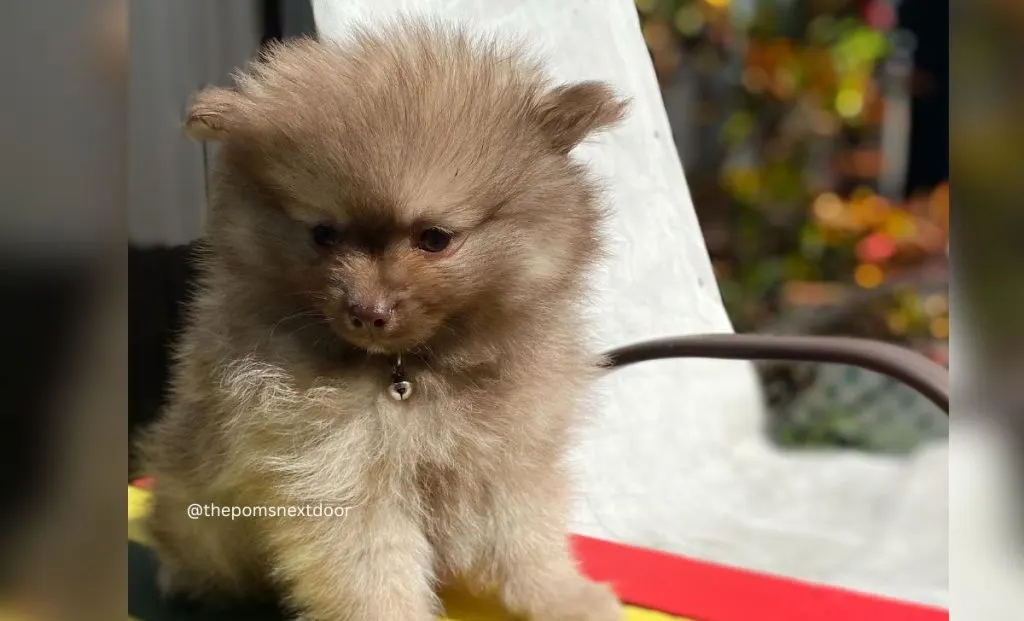
Chocolate sable Poms must have a chocolate-colored base coat with darker chocolate guard hairs.
A chocolate sable Pom is the same as an orange Pom except for two copies of a brown gene. This gene will make all the black pigment on a dog’s body brown.
Any orange coloring on a body will become coppery brown. Just-born pups, as with oranges, can be mistaken for chocolate and tan until some time passes.
Then you can see the sable bands on the pup’s forehead and body, which are not only solid brown.
11. The Blue Sable Pomeranian

Blue Sable Poms have blue base coats and dark blue guard hairs.
Blue sable occurs when the dilute gene reduces the depth of the already there black pigment, so it looks like the coat has a bluish tinge.
When the puppies are born, they may appear blue in color.
12. The Orange Sable Pomeranian
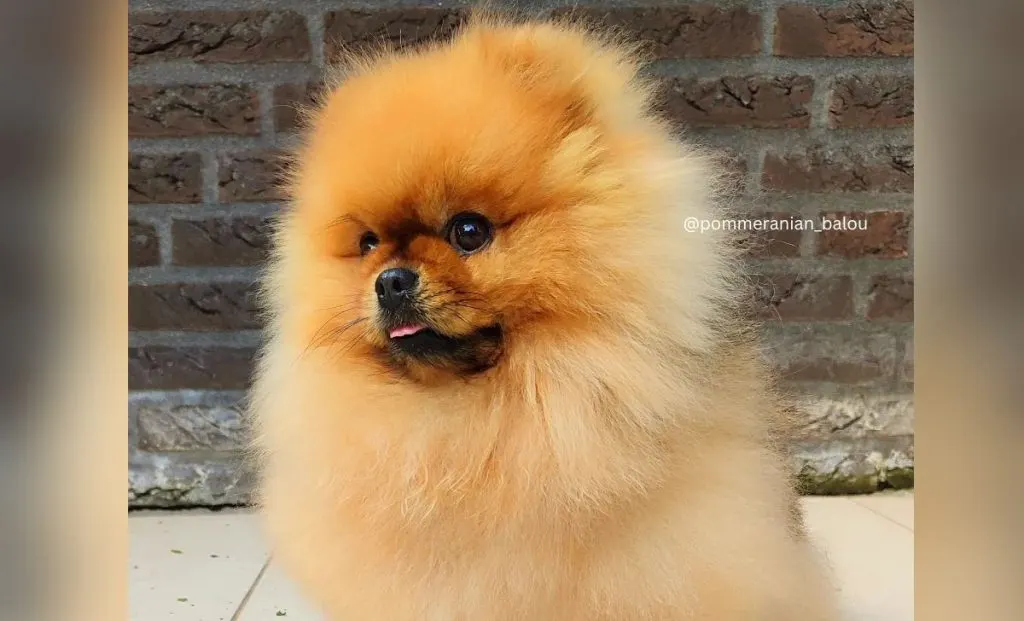
These dogs have deep orange guard hairs with black tips, and their undercoat is cream or light orange.
An orange sable Pom pup is often quite dark at birth.
13. The Heavy Orange Sable Pomeranian
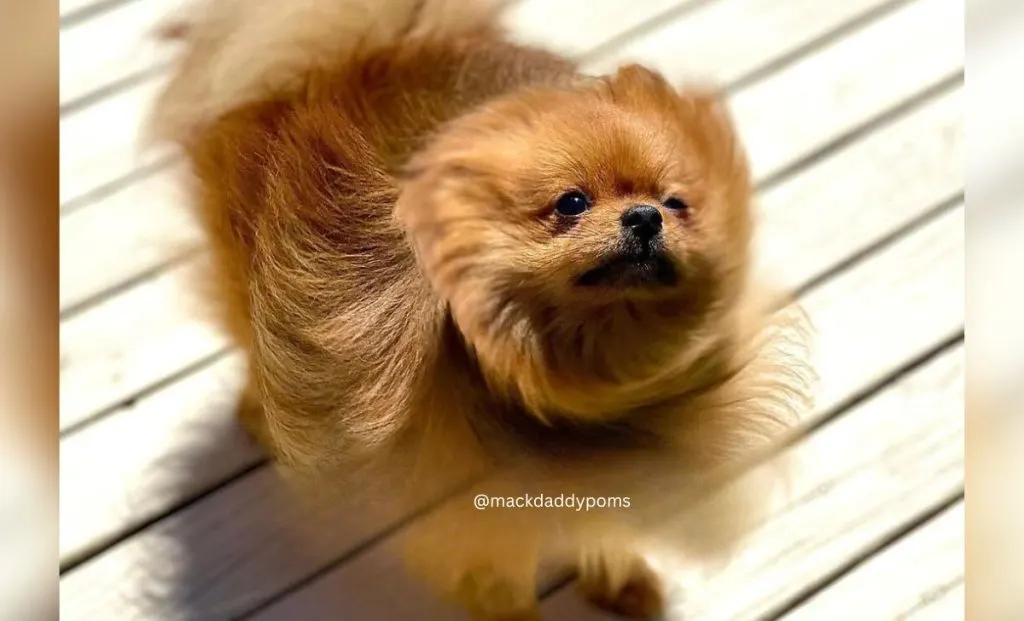
Heavy sable Poms have a lot of black guard hairs coating their bodies.
Their appearance may resemble black and tan except for more orange on the head and legs than authentic black and tan.
14. The Wolf Sable Pomeranians
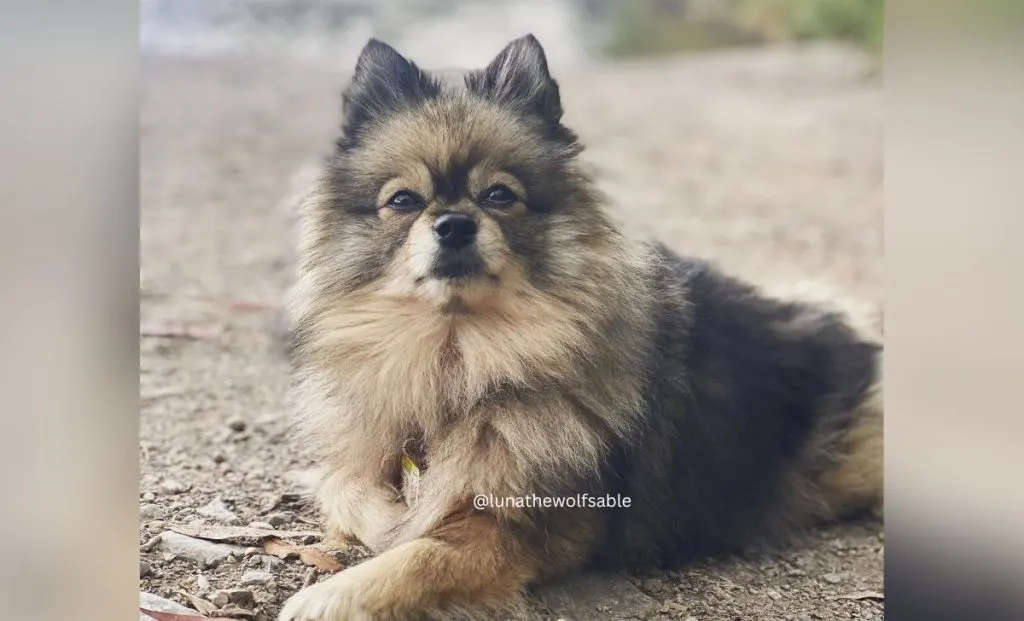
The wolf sable gene creates the wolf sable pattern, the same one found in the breed known as the Keeshonds.
As with the mentioned breed, lighter “spectacles” must be visible around the eyes of the dog, proving they’re wolf sables, not simply heavy orange ones.
Wolf-colored Poms have a grey undercoat, and the guard hair is grey with black tipping.
The dog’s grey undercoat and guard hairs can differ from silvery off-white to pale grey. The wolf sable Pom colors are grey-shaded and have no hint of orange in the coat.
Beginner breeders will sometimes inaccurately register a gray pup as a wolf sable.
Orange sable pups often appear more gray than orange in the first six weeks. However, as they age, the orange color comes through.
Skilled breeders know to inspect behind the ears. The fur color behind a puppy’s ears is a reasonably valid guide to the Pomeranian puppy’s adult coat color.
15. The Red Sable Pomeranian
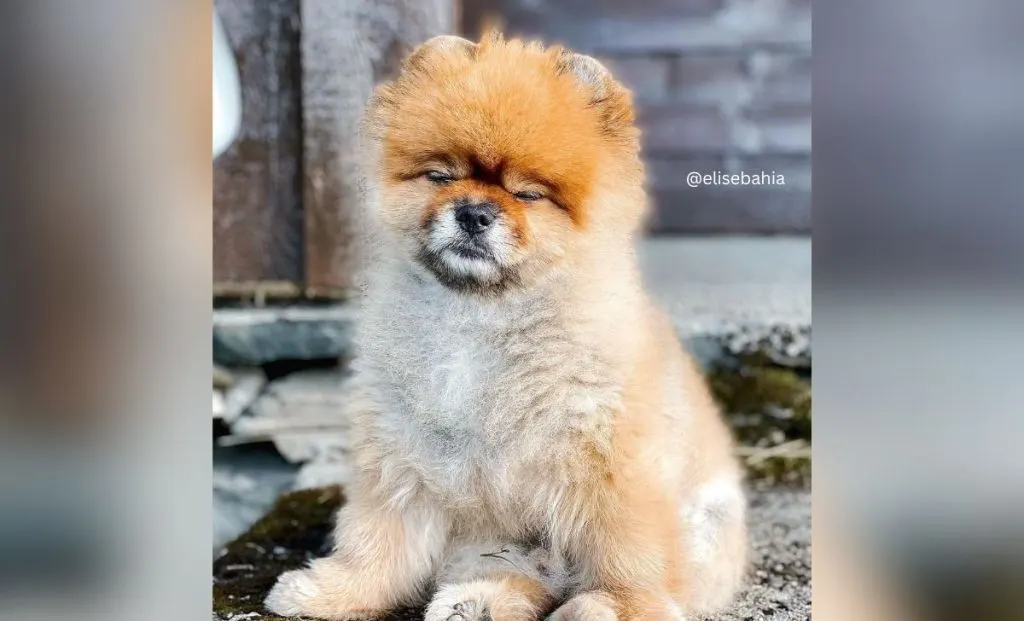
These dogs have black tips and red hues.
The red sable is almost precisely an orange, except that a reddish hue substitutes the orange base.
Usually, these pups have the color of an Irish Setter dog, except for black guard hairs (sables).
16. The Cream Sable Pomeranian

Cream sable puppies are paler than orange sable ones, as they have black sabling.
This color cream is usually a dingy silver as a newborn. The puppy coat is silvery grey, then cream, with usually some sable tipping to the guard hair.
A cream sable pup will have black whiskers and points. When they are first born, the pups may sport a silver color, but it becomes a cool cream color when they become adults.
The Tan Point Pomeranian
Poms that have tan points occur in three primary colors:
- Blue and Tan
- Brown and Tan
- Black and Tan
All of these colors share the exact tan marking patterns.
Any allowed pattern or solid color with tan or rust sharply specified, occurring above the eyes, on the muzzle, throat, and chest, on all legs and feet, and below the tail.
The richer the tan on the dog, the more desirable it makes it. Tan markings should be readily noticeable.
17. The Black and Tan Pomeranian
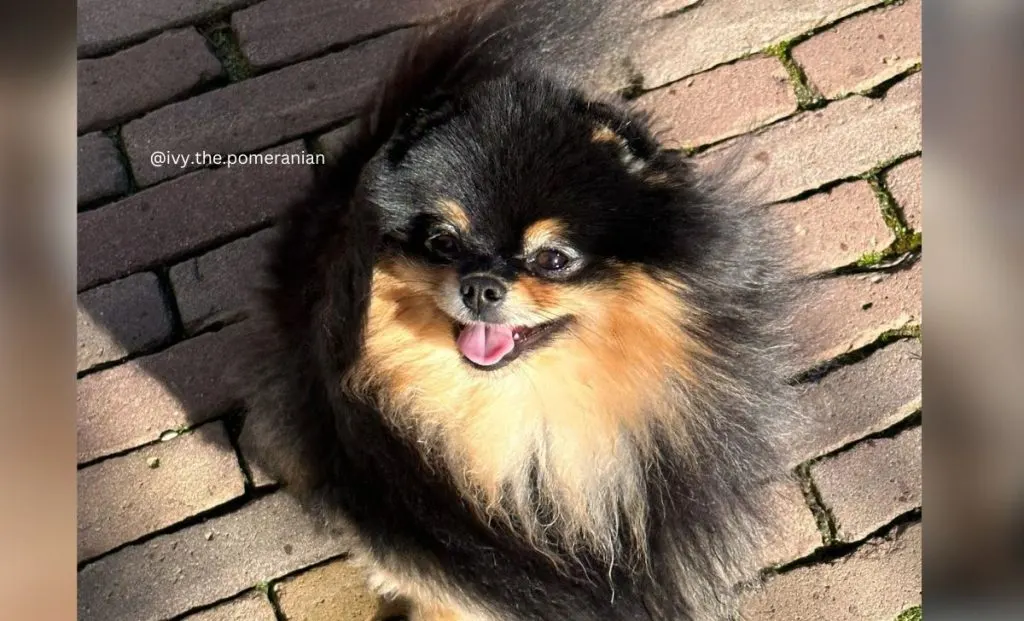
As the name gives away, these are black-colored dogs with tan or rust markings.
The undercoat’s base color must be lighter than the primary color of the coat, and all the points must be black.
The rusty, darker color is desired if you have two dogs of the same quality.
18. The Brown and Tan Pomeranian
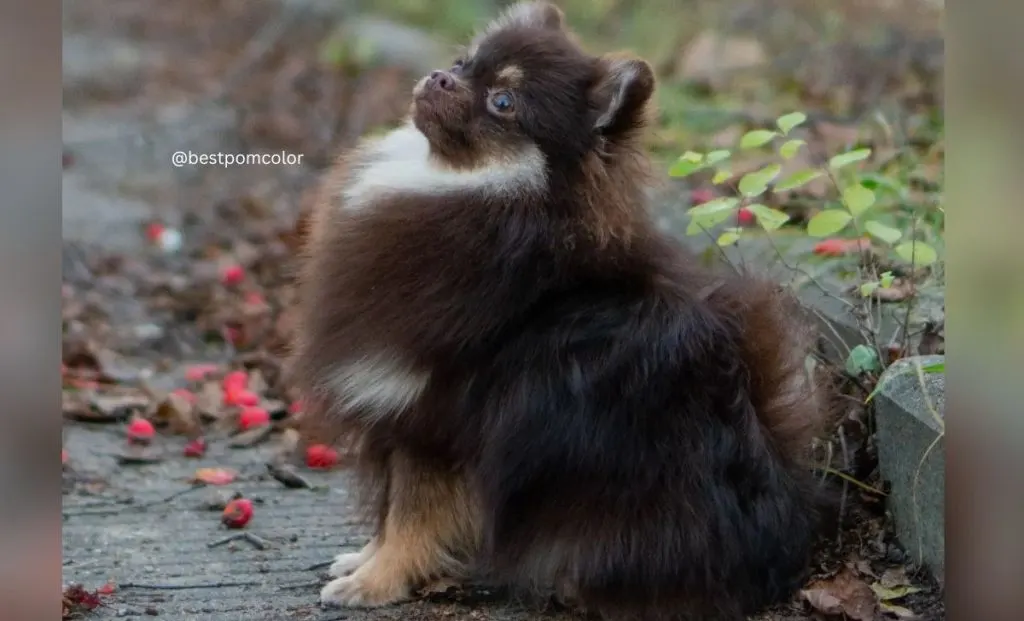
This variety is called Chocolate and Tan, covering all shades of brown.
Starting with the pale beaver with rust or tan right to the darkest chocolate hue.
The points must be brown, and their shade must match the shade of the coat.
19. The Blue And Tan Pomeranian
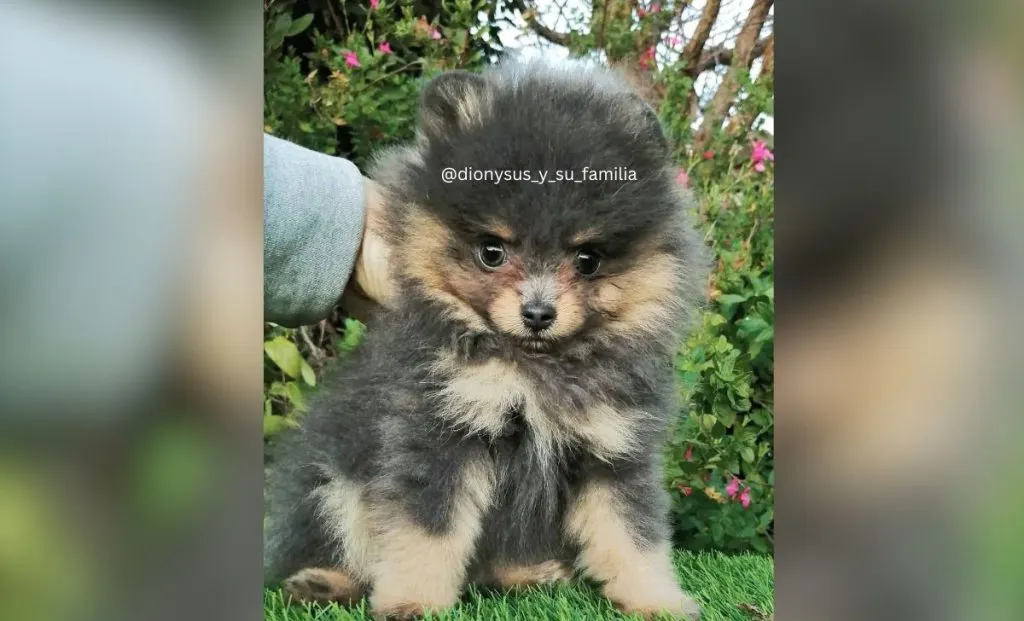
These poms have rust or tan and are blue. The points must be blue and match the shade of the coat.
The Brindle Pomeranian
Brindle is a beautiful, sought-after pattern with base color and striped overlays.
The base color can be gold, orange, or red, and the brindle must be substantial with black stripes.
Sometimes, it can also be combined with other patterns on a dog’s coat, such as black and tan or parti.
The points must match the base color. Stripes may be thin or broad and only occur on parts of the body or the entire width of the dog.
Stripes on mature brindle Pomeranian coats may appear cracked thanks to the length of a grown Pomeranian coat.
Brindles frequently have an extremely dark dorsal stripe.
20. The Brindle Pomeranian
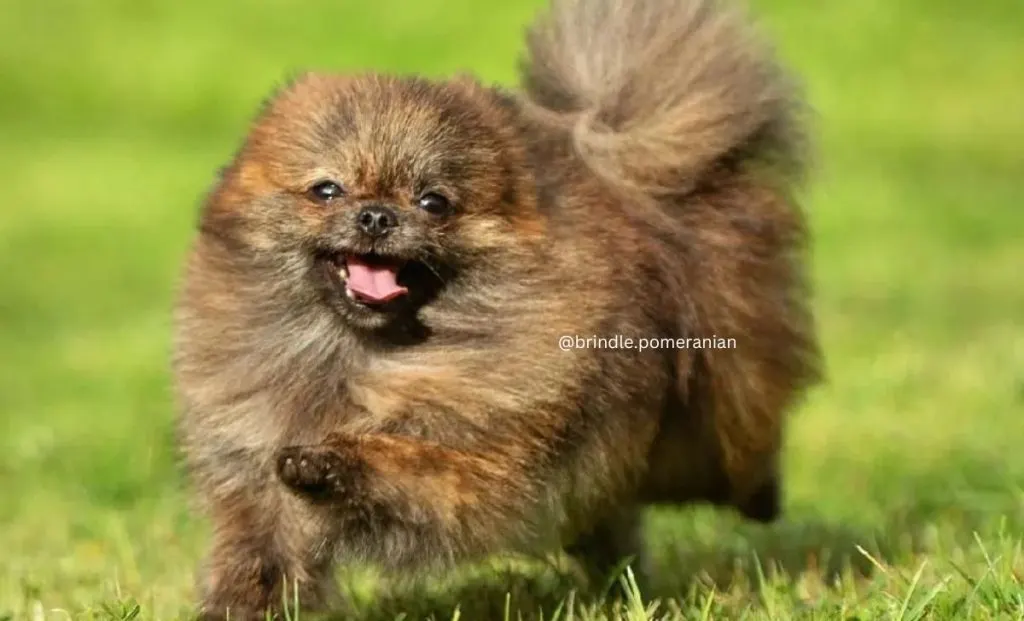
A striping pattern on the coat caused by the dominant gene is known as the brindle.
The Boxer dog breed typically has this particular look, as do various other dog breeds.
A solid black self-color may disguise it, but it’s dominant over being non-self-colors.
The striping can often integrate with other patterns, like parti-color, black, and tan (however, the stripes will only be visible on the pup’s tan sections) and merle.
However, the latter usually makes it difficult to notice the merle, so breeding them
together is not advised.
Other Possible Colors And Patterns
21. The Parti Color Pomeranian
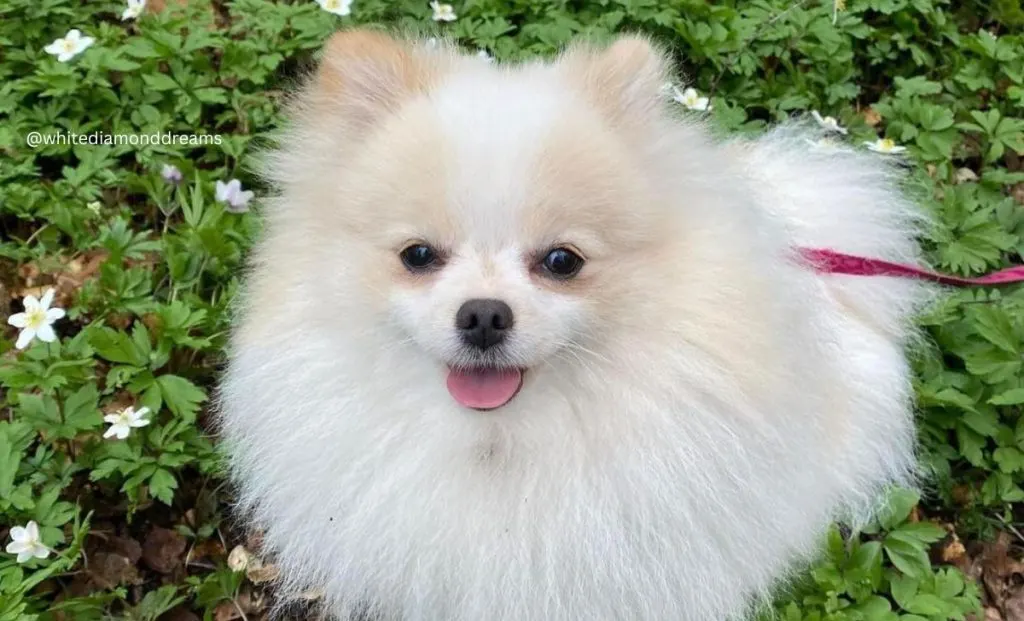
Parti-color Pom dogs are white, with any other color spread in patches and a white blaze on the head.
The markings on the head must be symmetrical. Excessive ticking is regarded as a fault by the breed standard.
All the points on particolored Poms must match the color of the patches on the coat.
For example, black, cream, brindle, or orange party dogs must have black points.
Parti-color is the term that illustrates pups with different degrees of white markings.
The white markings might be involved in base colors, color combinations, and other Pom patterns.
This list will give you some notion of the various options:
- Black and white
- Blue and white
- Lavender and white
- Orange and white
- Cream and white
- Beaver and white
- Brindle and white
- Red and white
Then we have the Pom patterns:
- White and sable patterns (like wolf, cream, blue, orange, chocolate, and red sables)
- White and tan patterns (like the blue, black, and chocolate & tan)
Parti-colored Pomeranians appear to be the most clever, outgoing, and energetic members of the Pomeranian dog world.
22. The Extreme Piebald Parti Color Pomeranian
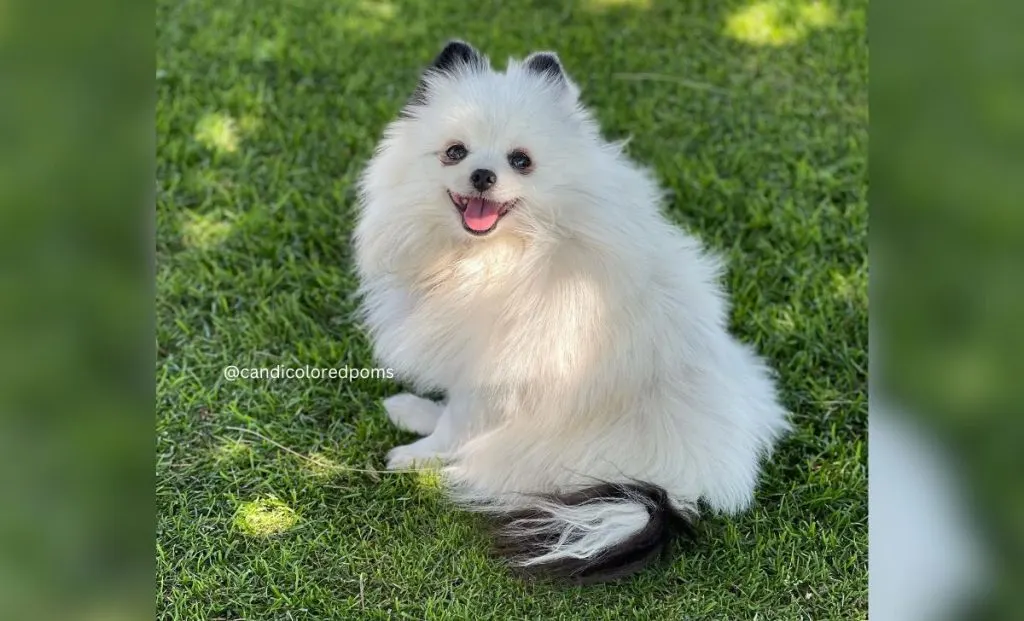
These dogs are white with some patches of color on the head and the base of the tail.
23. The Piebald Parti Color Pomeranian
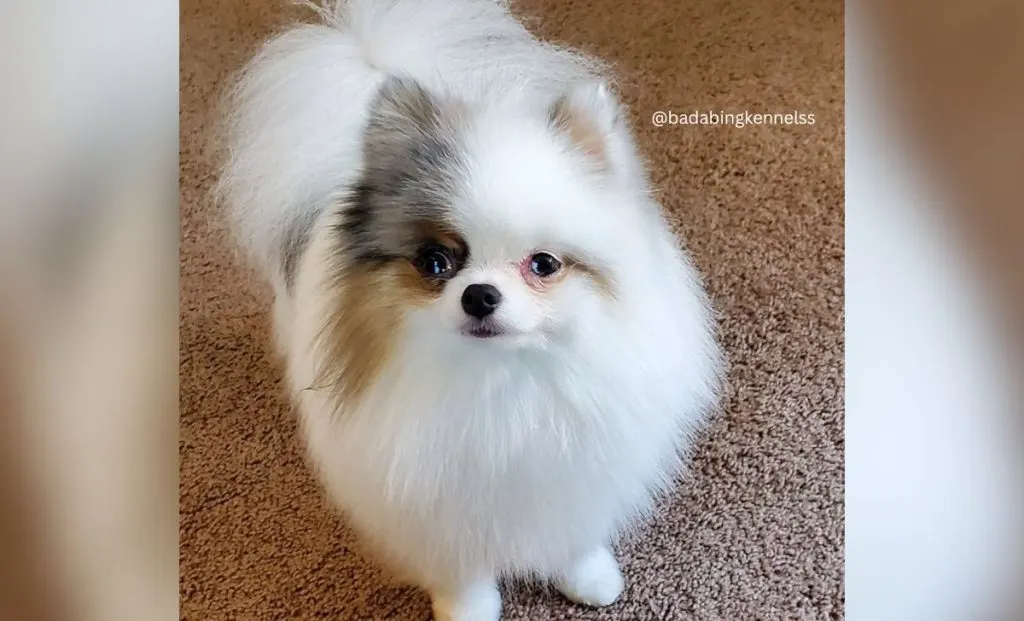
The piebald Pom has a white base with patches of color located on the head of the dog, as well as the body, and base of the tail.
24. The Irish Parti Color Pomeranian
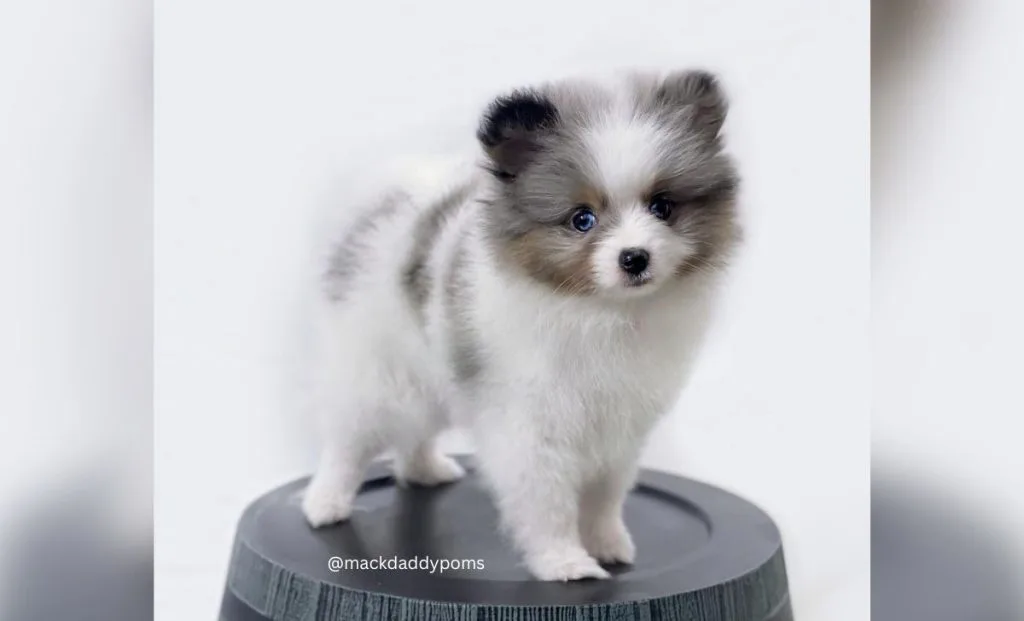
This Pomeranian parti variant has color on the head and body and white legs, chest, and collar.
25. The Merle Pomeranian
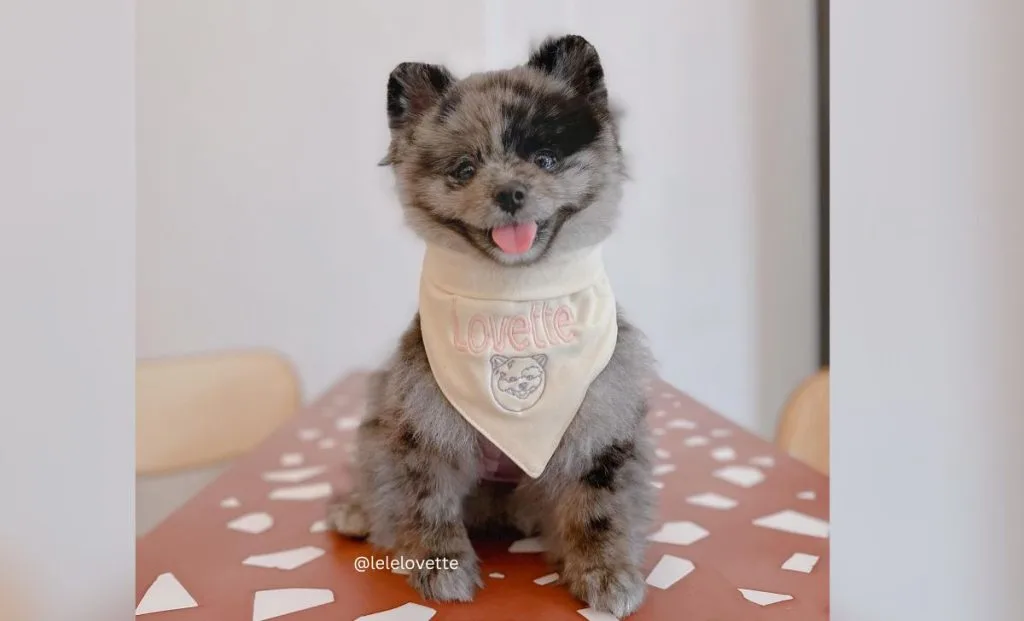
It is the typical gray/black pattern. In reality, the blue merle Pomeranian is black or black and tan, with the dilution gene influencing the black coat regions.
Beaver, blue, and brown merle Poms must have self-colored points.
The Pomeranian Breed Standard does not permit blue eyes.
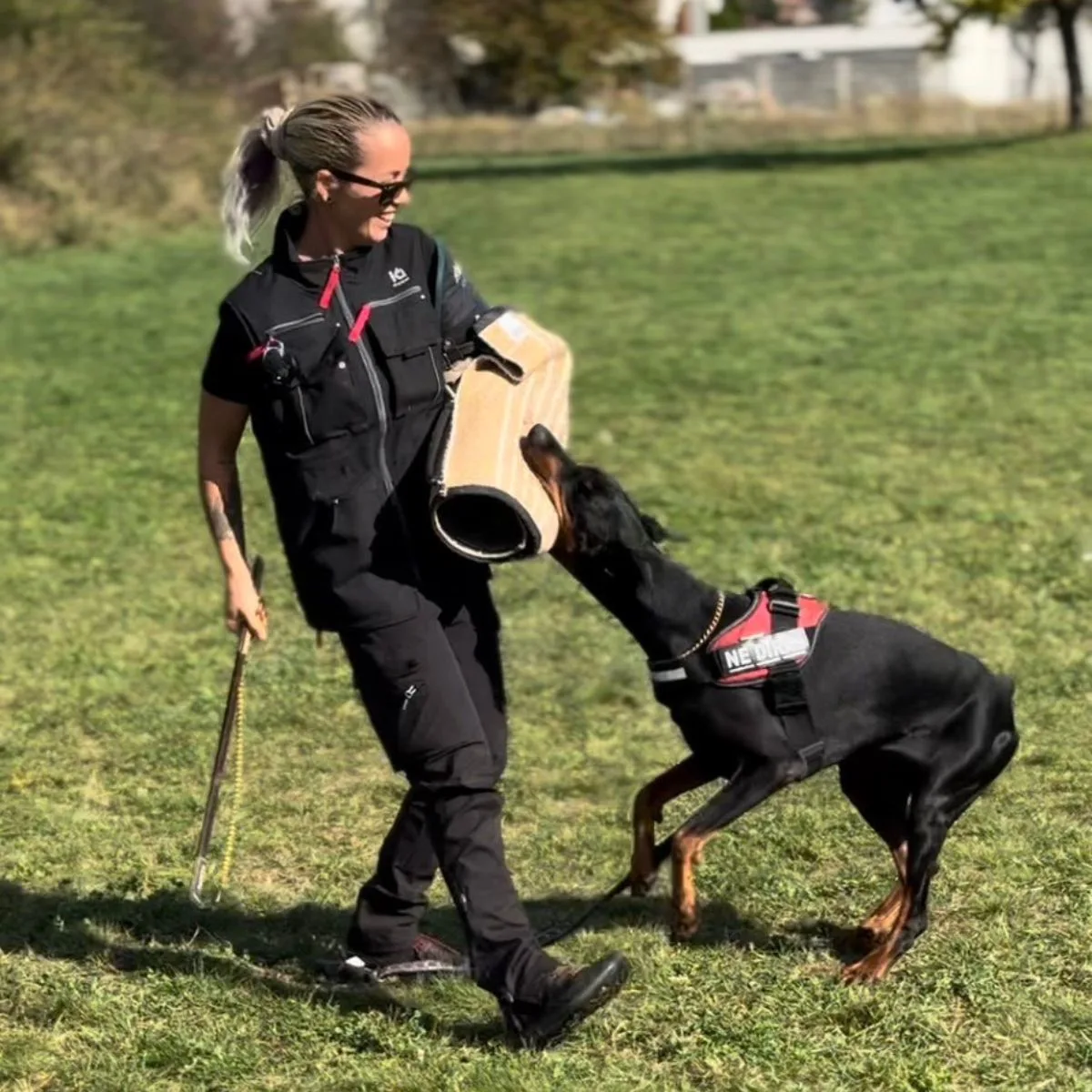
Nandina has been a lifelong dog owner and enthusiast. She shared her home with multiple breeds, including Giant Schnauzers, Cane Corsos, and Huskies. Currently, she is raising a three-year-old rescue and a working-line German Shepherd puppy.
Actively engaged in IGP dog sports for two years, Nandina is a certified instructor for basic obedience and socialization. She works as a trainer in her local dog sports club, and in her spare time, she handicrafts biothane gear for dogs.
